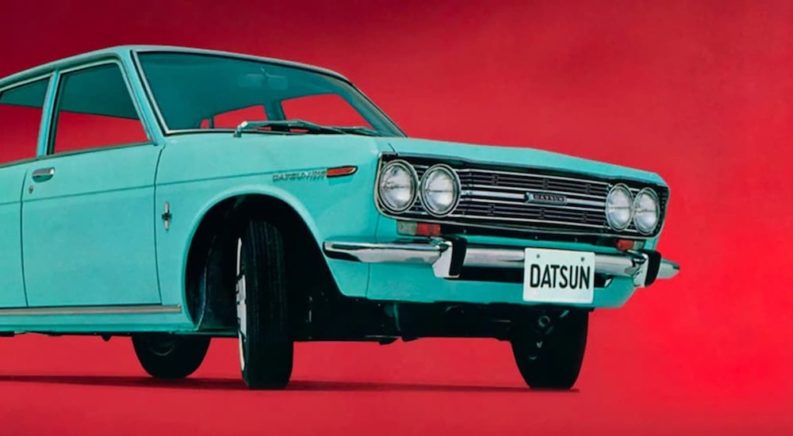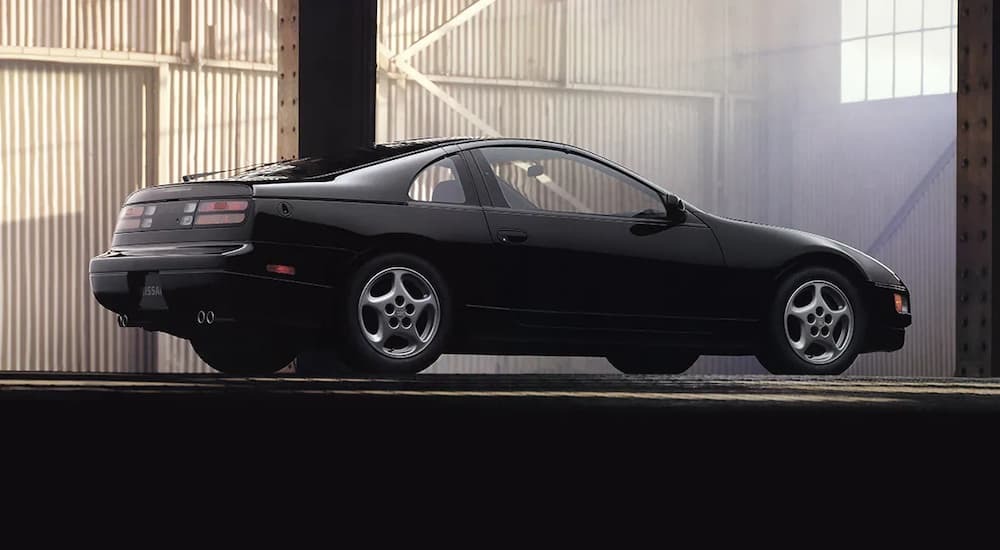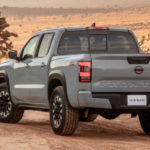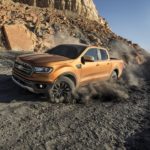Nissan is among the largest Japanese car brands in Canada, selling a wide range of cars, trucks, and SUVs, but older drivers will remember that Nissan wasn’t always known by that name. Instead of visiting a Nissan dealership to find popular models from the Micra to the Maxima, you would head over to your local Datsun dealership. In 1984, Datsun rebranded to Nissan, and today the Datsun brand is nothing more than a footnote in history. But why was the Datsun name used in the first place? What caused the shift to the Nissan name? And what does “Nissan” actually mean? It is time to uncover the convoluted history of this storied Japanese brand.
Getting Started With DAT
The Nissan story began over 70 years before the Nissan name appeared in Canada. In 1911, the Kwaishinsha Company was founded with the financial backing of Den Kenjiro, Aoyama Rokuro, and Takeuchi Meitaro. In honour of these three investors, the first Kwaishinsha model was named the DAT-GO. Although this early car was not a huge hit at the time, and the company soon turned to building military trucks instead of civilian cars, the DAT name stuck around.
In 1925, the original Kwaishinsha name (which somewhat unimaginatively used the characters “快進” for “good progress”) was officially dropped, and the company was renamed DAT Jidosha Shokai (“DAT Automobile Company”) after its first product and original investors. The newly renamed DAT merged with Jitsuyo Jidosha (“Practical Automobile”), another small car manufacturer, the next year, changing the course of the Japanese automotive industry.
While DAT had been focusing on trucks, Jitsuyo Jidosha had lived up to its name and built an affordable and practical car known as the Lila after its purple paint. After the merger, DAT decided to continue work in this direction, unveiling the Type 10 “Son of DAT” in 1931. This practical vehicle proved promising, although its name was soon shortened to simply “Datsun.” As the improved Datsun Type 11 and Datsun Type 12 rolled off the lines in increasing numbers, the Datsun name even started to become known outside of Japan, and models began being exported to New Zealand and Australia in the mid-1930s. Although these cars were small and not particularly powerful, they were affordable and reliable, a legacy that the Nissan brand continues to uphold to this day.
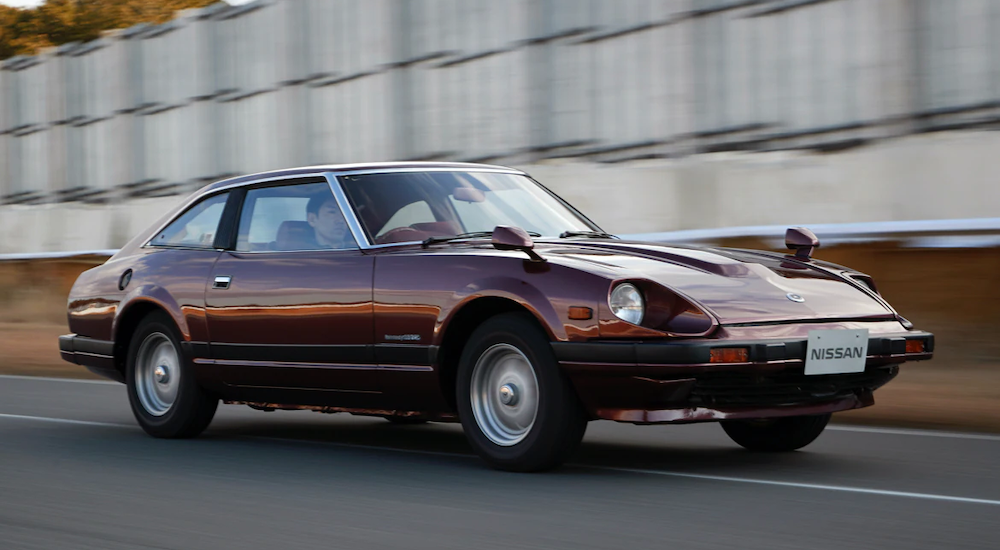
Datsun Goes International and Disappears
The widespread destruction of World War II was a setback for the Datsun brand, but it soon recovered and began exporting cars again in the 1950s. The first Datsun to reach North America was the Datsun Bluebird, which was unveiled at the 1958 Los Angeles Auto Show. Datsuns began being officially sold in the United States in 1960, and Canadians were eager to get their hands on these stylish and efficient Japanese cars, unofficially importing them from south of the border.
However, Datsun took notice, and the Canadian desire for these cars was satisfied in 1965 with the opening of an independent Canadian branch for the brand. Soon, Datsun was one of the most popular brands on the road, and its popularity was only boosted by the Oil Crisis of the 1970s. As gas became scarce, Canadians turned from the fuel-hungry domestic North American brands to the affordable and efficient Datsun models.
Then, in 1984, after almost twenty years of strong sales, the Datsun brand disappeared from Canada overnight. One day there were Datsun dealerships in every major city, and the next day, they had been replaced by Nissan dealerships. The rebranding cost hundreds of millions of dollars, and the loss of brand recognition was immeasurable. So why did it happen?
Where Does the Name Nissan Come From?
The shift from Datsun to Nissan may have come as a surprise to many drivers, but the Nissan name actually dates back decades before the first Datsun arrived in North America. Back in 1931, DAT partnered with the Tobata Foundry for components to build the original Datsun. The partnership flourished, and Yoshisuke Aikawa, the President of the Nihon Sangyo conglomerate that owned the Tobata Foundry, began acquiring shares of DAT, eventually making DAT part of the Tobata Foundry.
As the Datsun brand took off, Aikawa decided to reorganize his businesses, splitting the automotive division off from Tobata Foundry. Rather than keeping the old DAT name for this new company, Aikawa simply called it the Jidosha Seizo Company (“Automobile Manufacturing Company”). Fortunately, this unimaginative name didn’t last long, and in 1934, Jidosha Seizo was renamed Nissan Jidosha (literally “Nissan Automobiles” but officially translated as “Nissan Motor Company”).
The name Nissan was originally an abbreviation of Nihon Sangyo (“日本産業” which literally translates to “Japanese Industry”) and can refer to both the Nissan Motor Company and the larger Nissan Group that the automobile manufacturer is a part of. Interestingly, the characters for Nissan (“日産” taken from “日本” for “Nihon” and “産業” for “Sangyo”) can be read as “Daily Output;” an appropriate name for one of Japan’s largest manufacturing groups.
While the 1984 switch from Datsun to Nissan may have seemed abrupt to Canadians, it is mainly a surprise that it didn’t happen sooner. In Japan, the Datsun brand was only used for affordable vehicles, while the Nissan name was applied to more prestigious models, including the iconic Nissan Skyline and Nissan Fairlady Z. The reason why the Datsun name lingered so long in North America was because Nissan had been deeply involved in building military equipment for Japan during World War II, and the company wanted to separate its civilian production from its military history.
But as the war passed into history and the cars built by Nissan became more popular around the world, it made less and less sense to continue marketing them under the Datsun name. Why was a major corporation selling products in some of its most important markets under a different name? This question only became more pressing as time passed, eventually leading to the 1984 rebranding.
A Car by Any Other Name Is Still as Sweet
In 1984, it may have seemed odd to drop the Datsun brand, but today that move seems to have paid off. The Nissan brand is just as strong today as the Datsun brand ever was and remains committed to the original DAT ideal of building affordable and practical cars. However, Nissan has also expanded far beyond simple, affordable vehicles. As part of the Nissan Group, the Nissan brand had the resources to grow its lineup, adding sophisticated luxury vehicles and high-performance sports cars to meet the demands of virtually every driver.
Over the years, Nissan has even sold cars under a variety of names other than Nissan and Datsun. The acquisition of Prince Motor Company in 1966 was a particularly important turning point for Nissan as it gave the brand its first luxury cars, including the Gloria and the Skyline. Those Prince models eventually formed the basis for the modern Infiniti luxury brand, and the Skyline is still sold in Canada as the Infiniti Q50 and Q60.
Few automobile brands have seen as many name changes over the years as Nissan has, but throughout all the mergers, acquisitions, and rebrandings, you can still trace the heritage and principles. Whatever the future has in store for Nissan, we can expect to see the same level of commitment to building both practical and legendary products.

